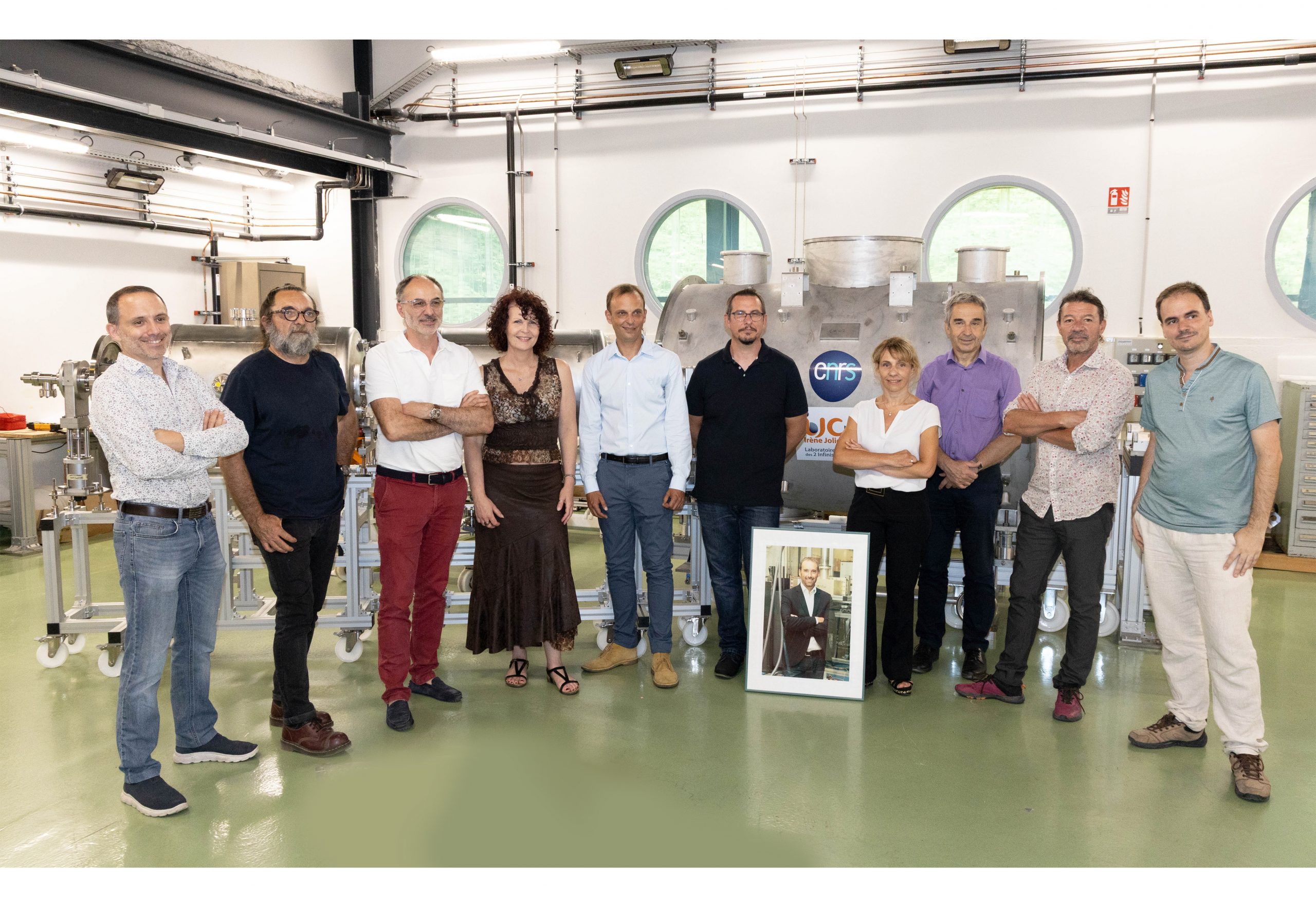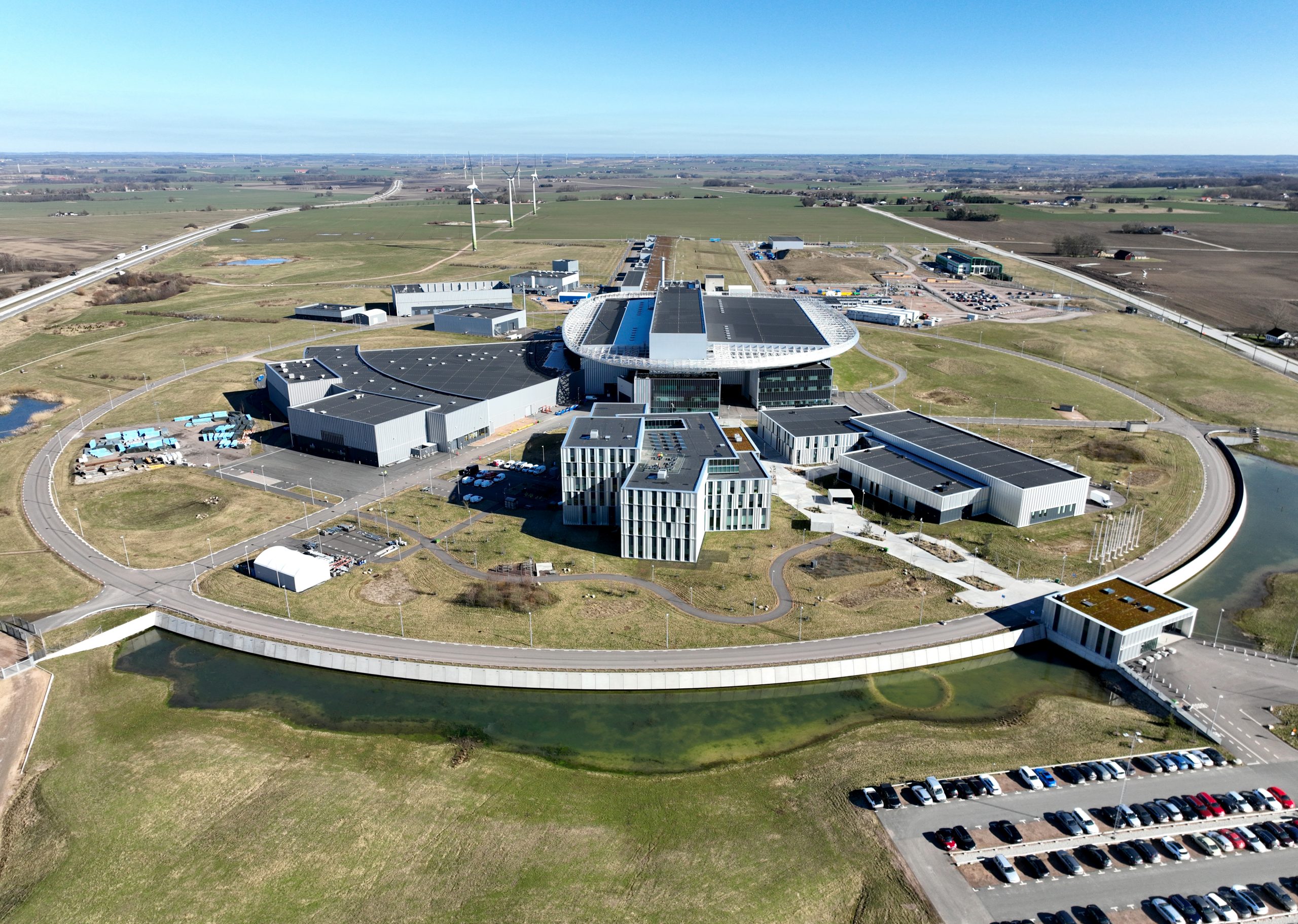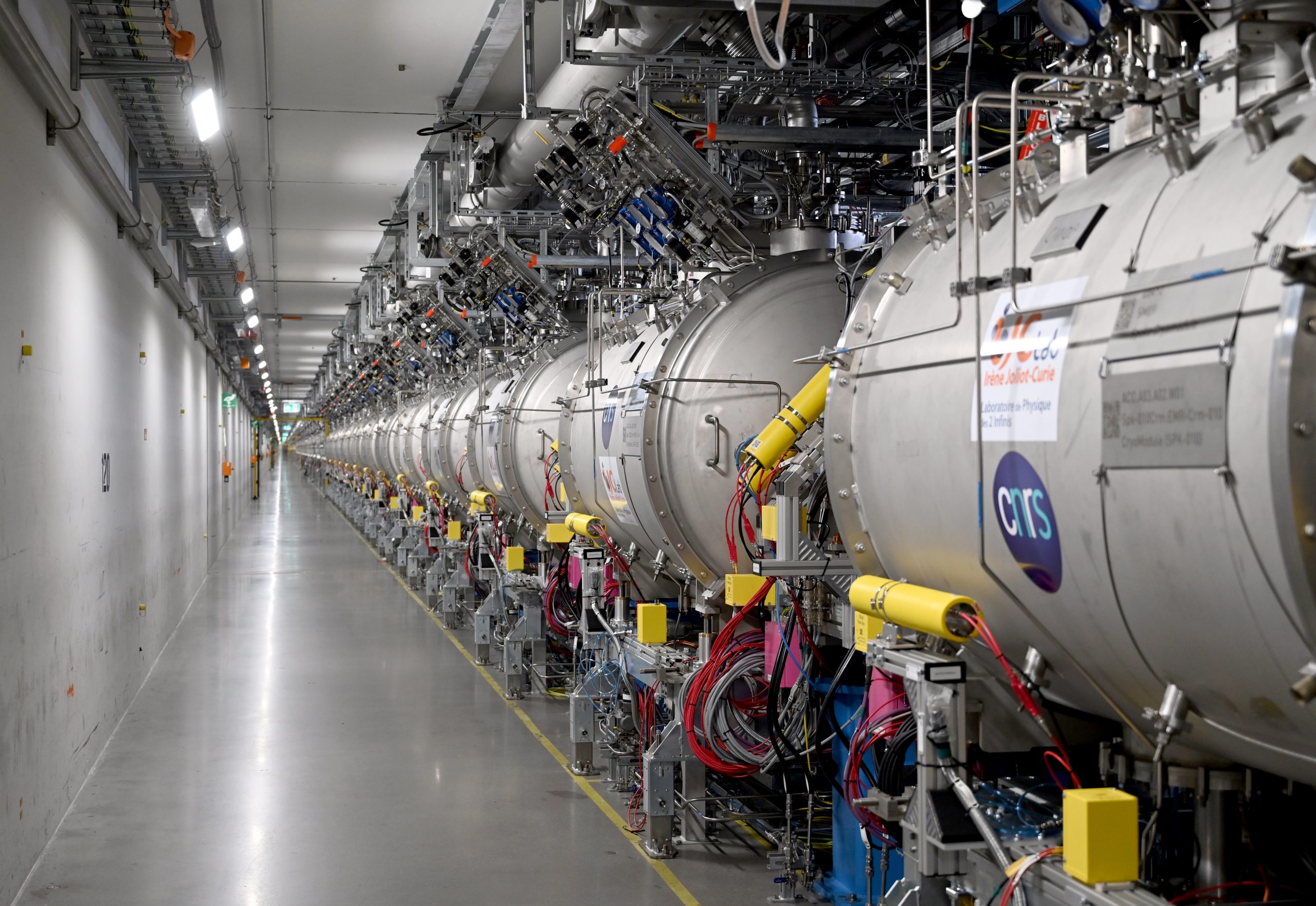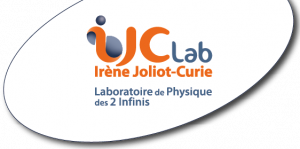
Exceptional recognition for 15 years of successful commitment
CNRS has just awarded a collective Cristal to the IJCLab team that dedicated 15 years of work to developing cryomodules for the European Spallation Source (ESS). This prestigious distinction recognizes a major technological contribution that has borne fruit: in May 2025, ESS reached the historic milestone of "Beam on Dump", confirming the success of the accelerator for which IJCLab components are key elements.
A world-scale project driven by French innovation
ESS, currently under construction in Lund, Sweden, is destined to become the world's most powerful neutron source and will provide neutron beams for fundamental and applied research.

Aerial view of ESS, March 2024. © Michael Gartner/Gartner Film
At the heart of this infrastructure lies a linear accelerator nearly 600 meters long that gives protons a maximum energy of 2 GeV with a power of 5 MW. These protons, which will be directed onto a tungsten target, will produce neutrons through spallation reactions.
The French contribution, entrusted to CEA and CNRS, began in 2009 with a prototyping phase of an innovative superconducting cavity technology called Spoke. This innovation was proposed by the IJCLab team and selected by the ESS project. Responsible for several work packages for the accelerator, the IJCLab team was notably in charge of designing and building these Spoke-type superconducting cavities, integrated into their cryogenic enclosures called cryomodules.
Technical prowess validated by the first beams
The IJCLab team led the construction of 13 cryomodules, each weighing nearly 1.5 tons and containing 2 Spoke cavities operating at 352 MHz (26 cavities in total). These modules accelerate protons from 90 MeV to 216 MeV over a distance of approximately 56 meters. At the same time, the team also designed, built and installed the entire cryogenic distribution system for the Spoke section.

The Spoke section of ESS's superconducting linear accelerator, upstream towards the target. © Ulrika Hammarlund/ESS
Each cryomodule integrates components of exceptional technical complexity: resonant cavities capable of generating an intense electric field of 9 MV/m to accelerate the beam, power couplers acting as antennas transmitting 335 kW of RF power to the cavities, and tuning systems enabling fine frequency regulation to maintain resonance. The entire system operates at the extreme cryogenic temperature of 2 Kelvin (-271°C), requiring perfect mastery of cryogenic technologies to maintain the superconducting state of the cavities.
After several years of design and prototyping, the team took charge of all phases of preparation and testing of critical series components as well as the final assembly of the 13 cryomodules. All Spoke cavities, power couplers and tuning systems were successfully prepared and tested within the laboratory's SupraTech platform.
Each cryomodule was then sent to Uppsala University in Sweden to be tested under real operating conditions. After validation of their performance, the 13 cryomodules were transferred to the ESS site and installed in the accelerator tunnel from 2023.
The performance of the accelerating cavities is remarkable: they exceed ESS specifications by more than 30% in terms of accelerating gradient.
Installation of the entire accelerator was completed at the end of 2024. The cryogenic distribution system is operational and the Spoke cryomodules successfully accelerated their first proton beams in May 2025, thus reaching the historic "Beam on Dump" milestone.
A global contribution evolving towards strategic partnership
This success demonstrates that the ESS accelerator functions perfectly as an integrated system and confirms the excellence of IJCLab's Spoke cryomodules.
As highlighted by Helmut Schober, ESS Director General, we know with Beam on Dump that the accelerator is functioning optimally. This decisive step now paves the way for "Beam on Target", the moment when protons will strike the tungsten target to produce the first neutrons.
But the collaboration doesn't stop there. What began as an IJCLab "in-kind" contribution within the framework of a ministerial decision by France and other European countries has now transformed into a true strategic partnership.
IJCLab teams are currently working on maintaining a cryomodule and ensuring knowledge transfer to ESS teams. This ongoing collaboration illustrates the evolution from a technological contribution to sustainable support, guaranteeing the long-term performance of the neutron source.
An exceptional team officially rewarded

This major technological achievement, representing an investment of nearly 20 million euros, was made possible through the exceptional commitment of a multidisciplinary team. CNRS's collective Cristal officially honors 12 members of this team:
Sébastien Bousson (posthumously), Guillaume Olry, Patxi Duthil, Denis Reynet, Sylvain Brault, Gilles Olivier, Nicolas Gandolfo, Virginie Quipourt, Sylvie Durand, Frédéric Chatelet, Matthieu Pierens and Patricia Duchesne.
This distinction, although limited to 12 people by CNRS regulations, symbolically represents the entire ESS team and IJCLab support services that contributed to this major project. Many others, through their expertise and dedication, also made this success possible. In no particular order: Fetra Rabehasy, François Galet, Christopher Magueur, Khaing Mon, Eric Guérard, Remy Dorkel, Véronique Poux, Thierry Pepin-Donat, Lê My Vogt, Thibaut Gerardin, David Le Dréan, Vincent Delpech, Guillaume Mavilla, Olivier Frossard, Alice Thiébault, Sylvain Berthelot, Jean Nsimaketo, Jean François Yaniche, Sébastien Blivet, David Longuevergne, Christophe Joly, Akira Miyazaki, Mael Vannson as well as Natacha Bippus (posthumously), Didier Grolet, Francis Dubois and Richard Martret who are now retired, and the mechanics from the mechanical department.
IJCLab thus confirms its position of world excellence in the field of superconducting accelerators, demonstrating its unique capacity to successfully carry out international-scale projects and opening new perspectives for European neutron research.
Sébastien Bousson, who left us prematurely in 2022, was the great architect of IJCLab's and the CNRS Nuclear & Particles institute's expertise in the field of superconducting accelerating cavities for linear particle accelerators. He championed the ESS project within the laboratory and put everything in place for its success.

Email from Sébastien Bousson marking the "kick-off" after preparation since 2009 of the ESS project at IJCLab (incorporating IPNO since 2020).
CNRS's collective Cristal distinguishes a team of technicians, engineers, administrators or researchers for a remarkable achievement obtained in the exercise of their profession in service of research.
En savoir plus :
IPNO: Green light for series production of ESS instrument cryomodules - December 2019
ESS Achieves Beam on Dump: Accelerator Commissioning Underway - May 2025























